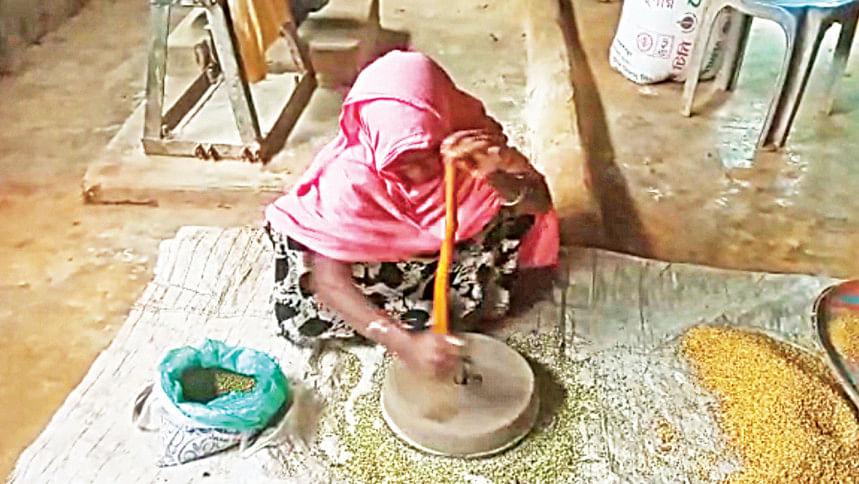Milling machine leveraging mung dal farmers

The availability of a simple electricity-run milling machine is helping farmers in Patuakhali double their earnings from a legume crop.
Mung bean is a relatively drought-tolerant and low-input crop that can improve soil fertility and provide livestock feed.
Drying, removal of its green skin and subsequently splitting it in half yield the pale-yellow mung dal, which can sell for twice as much.
Until a couple of years back, this processing was done using quern-stones, which is tedious, for which farmers used it for only what they sought to consume themselves.
However, things started to change since January 2021.
Existing grain millers started to get the machines for free from Bangladesh Agricultural Research Institute and the Bangladesh Wheat and Maize Research Institute with support from an Australian government project through the Australian Centre for International Agricultural Research.
It had taken 5 years to develop the "mini mills" with the help of local craftspeople, that too using parts readily available in the local market, said Dr Mrinmoy Guha Neogi, deputy project leader from the University of Western Australia.

There were 14 set up in Patuakhali and Barguna each, two in Pirojpur and one in Barisal. The only precondition was that the millers could charge farmers no more than Tk 10 per kilogramme.
And this has been a long time coming for Rafiq Sipai. The farmer of Patuakhali sadar upazila has been cultivating mung beans for around 15 years.
This year he is very happy to get Tk 120 to Tk 130 per kilogramme of mung dal whereas the same amount of mung bean would have brought him Tk 40 to Tk 50.
Harvesting 16 maunds (one maund equals around 37 kilogrammes) from 1.30 acres of land, he plans to expand his cultivation next year.
Farmer Zakir Hossain of Barguna also plans to grow more of the legume. This year he harvested 25 maunds from 1.5 acres.
Both farmers use a machine set up inside the shop of Abdul Mannan Sikder in Hetalia Bandhghat area of Patuakhali town.
Sown in December and harvested in February, mung bean is one of the most preferred crops after rice and watermelon, said Abdul Awal, deputy assistant agriculture officer of Patuakhali sadar upazila.
Yields stand at around 1.3 tonnes per hectare in Patuakhali, he added.
This year 86,432 hectares of land were used, around 1,000 hectares more than that last year, said Md Nazrul Islam, Patuakhali district agriculture extension officer.
The machines are bringing more revenue for farmers and getting others interested, he said.

 For all latest news, follow The Daily Star's Google News channel.
For all latest news, follow The Daily Star's Google News channel. 





Comments